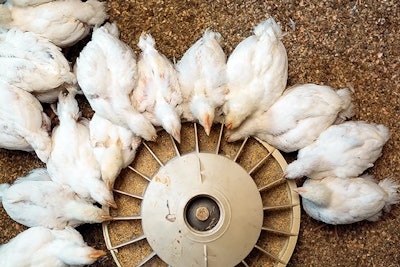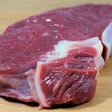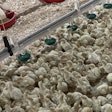
The broiler industry took a turn from boom to bust in the past two years. Better times may lie ahead.
In the past few years, despite higher costs, broiler and turkey companies found themselves in enviable financial position thanks to unique demand-side forces supporting product values.
Given the nature of markets, it was not surprising to see things change. But the speed and depth of the slump in broiler industry profitability is still breathtaking.
Big profits turn big losses
From spring 2021 until spring 2022, the integrators were in the driver’s seat. LEAP Market Analytics – comparing prevailing spot market values for products to transparent cost metrics available for feed and other inputs necessary to the production process – estimates industry-wide net returns averaged more than 25 cents per pound on a ready-to-cook (RTC) basis during that period.
The cycle peaked in May 2022, with an industry average profit of nearly 50 cents per pound. By the winter, however, integrators were suffering losses of more than 30 cents per pound.
This was due to a demand collapse for key product categories. Input costs are down some, but the domestic broiler industry remains deep in the red due to persistent sluggishness in the boneless, skinless breast meat and wing markets.
May 2023 might represent nine consecutive months of losses for the broiler industry. Losses are close to 15 cents per pound. Conditions haven’t been this dire since at least 2011.
Turkey tangles with HPAI
Spot margin calculations for the U.S. turkey industry also tumbled. However, coming from a better position than the broiler industry, the turkey industry is still firmly profitable.
Highly pathogenic avian influenza (HPAI) complicated the picture. The turkey industry was hit exponentially harder than the broiler industry on a percentage basis.
Turkey producers affected by HPAI face additional costs for depopulation and clean up. They also suffer revenue shortfalls due to lost sales. Every operation takes on higher costs due to preventative measures taken by many farm managers to limit the contact risk.
It’s difficult quantifying the impact of HPAI-related costs on producers’ bottom lines, but its safe to assume the margin picture isn’t as rosy as the LEAP model implies.
Rays of hope
Both industries are facing stiff headwinds financially, but a few recent developments could generate renewed optimism.
On the broiler side, tenderloin and dark meat prices made impressive gains so far in 2023. On the turkey side, the whole bird market is proving incredibly resilient. Tom breast meat prices, discounted heavily earlier this year, appear to be stabilizing at around $3 per pound.
Feed costs are also leaning in a more favorable direction. July 2023 corn futures are already dipping below $6 per bushel and deferred contracts are slumping toward the $5 mark. Acreage and yield expectations point to continued relief as long as the weather cooperates in summer 2023.















